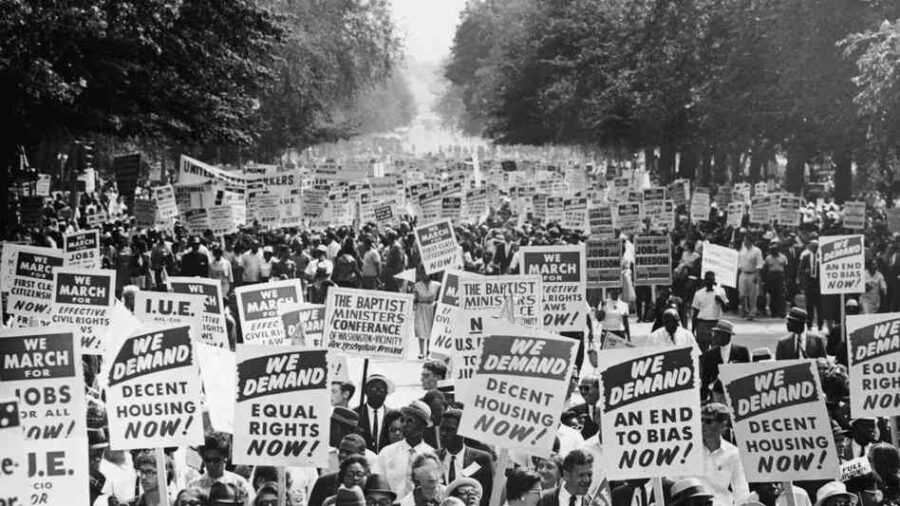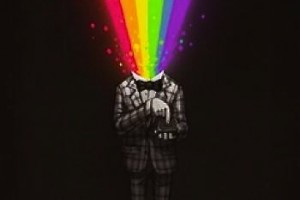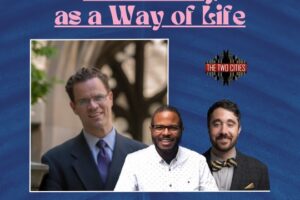“What is needed is a realization that power without love is reckless and abusive, and that love without power is sentimental and anemic. Power at its best, power at its best is love implementing the demands of justice, and justice at its best is love correcting everything that stands against love. And this is what we must see as we move on.”
-Dr. Martin Luther King, Jr. from “Where do We Go From Here?” Delivered at the 11th Annual SCLC Convention, August 1967
As I reflect back on the 9-10 months my wife was pregnant with our son, I remember being struck early on by the reality that this amalgamation of flesh and bone was a person, that he was our baby and that I loved him. There were even moments that I felt I could sense the beginnings of his personality. His incessant kicking and constant hiccups are still traits that have made the transition with him from the womb into the waking world. I say all this to say, the moment the doctor handed him to me in the delivery room was not the first time I realized his personhood. That moment of realization came at the first ultrasound, months before his birth, when he waved at my wife and I on a small black and white monitor, in the darkened room of our doctor’s office.
The three-month anniversary of my son’s birth comes at the same time as the 50th Anniversary of the March on Washington for Jobs and Freedom. While most know of the march due to the prolific speech made by Dr. Martin Luther King, Jr., equally as impressive about the event was the all-star roster of non-violent protest organizers assembled under the direction of the great A. Phillip Randolph. They came to Washington on that hot day in August to ask the president and the congress for the ability to obtain jobs and legislation that would guarantee the rights granted to them by the Constitution of the United States.
This turned out to be one of the most successful non-violent protest movements of the modern era. When I say successful I mean that the efforts of these individuals, working together, led to the passing of the Civil Rights Act (1965) and the recently gutted Voting Rights Act (1964). These were pieces of legislation that were essential in breaking down the barriers to minority democratic participation in Southern states that were still bent on implementing the repressive racist tactics spawned out of small minded Jim Crow ideology.
In the midst of a week of remembrance and celebration, another non-violent protest began on the campus of a small Christian university in the heart Southern California. The situation began with a student last spring that wanted to show graphic images of aborted fetuses in the university common area. This student was given these materials by a pro-life group, who in turn encouraged the student to go against the universities’ request to display the images in a more controlled environment where an actual conversation could be held. This group went so far as to give this student the means by which to secretly record via video camera, campus safety officers asking the student to leave since the student was in violation of the universities wishes. The video was then edited by the pro-life group, posted to YouTube and went viral in conservative circles.
And so, this past week is the culmination of this group’s attempts to make this university see the errors of its ways in limiting the free speech of this student by asking that the student display these pictures in a situation that could actually lead to constructive dialogue and change. They have launched a full-scale non-violent assault on the university, complete with fifty by one hundred foot billboards outside of campus covered with the graphic images the university asked the student to take down and a plane hired to fly over the university with a large graphic aborted fetus image for all the students and their families to see. Their goal, as I understand it, is to save the lives of unborn children, and to force people to deal with the realities of abortion.
As we look back on one of the most effective uses of non-violent protest in the March, we are at the same time confronted with one of inefficient uses of non-violent protest in this pro-life’s group’s campaign at this small Christian liberal arts college in Southern California. The power and force of the Civil Rights movement lay in their ability to use non-violent protest to grant them audience with people who made decisions, while also uniting people across ideological barriers for what leaders like Dr. King saw as the call to justice and liberty for all.
This pro-life movement’s tactics inspire exactly the opposite type of response. In fact, in badgering the university this way, they ostracize an institution that could feasibly be a platform from which this group could proclaim their message. The leader of this pro-life group was quoted in the campus newspaper as saying that they plan to invest millions of dollars over several years to allow the pictures to be shown publically on campus. Though I may not agree with their methods, from a strategy standpoint, this campaign is in my mind, a terrible waste of resources. Why not take those millions and use them to open conversations with people who actually disagree with you. Last I checked, the university this pro-life group is also pro-life, making this a case of ideological infighting, as opposed to a protest movement attempting to affect societal change.
Like most types of speech, the group’s right to protest in front of the university is protected under the 2nd Amendment. But just because a right is protected does not mean any manifestation of its use it is effective. This group’s rhetoric is full of vitriol and is borderline hateful towards the university for it’s treatment of the student in the spring. I understand that the pro-life groups has the right to disagree, but if they claim to be followers of Jesus, as many in this group do, then that disagreement should lead to conversation, not condemnation.
Dr. King in what many believe to be his first recorded speech conveys what love in disagreement should look like:
And this is what Jesus means, I think, in this very passage when he says, “Love your enemy.”…Love is understanding, redemptive goodwill for all men, so that you love everybody, because God loves them. You refuse to do anything that will defeat an individual, because you have agape in your soul. …This is what Jesus means when he says, “Love your enemy.” This is the way to do it.
The irony here is that Dr. King was referencing people who wanted to kill him as opposed to people within his own movement who sought to do things differently. His rhetoric of love was at the heart of the non-violent protest of the 1960s. I don’t feel the same sense of “goodwill for all men” in this pro-life’s campaign against this small, Christian liberal arts college. Instead I see an inefficient display of violent and graphic images whose sole purpose is to instigate shock in the families of students at this small, private university over what for many of them is their first opening weekend. If the rhetoric of love is, in fact, at the heart of this groups protest, then, I must say, they have a strange way of showing it.
The problem for me goes even deeper than the method and tone of this group’s non-violent protest. If this group is as pro-life as they say they are, then having people recognize the sacredness of life for all people, of all ages, sexes, races and sexual orientations should be the most important goal their movement. If they cared about the demands of justice, more than simply garnering attention of the media, they wouldn’t just show tiny aborted ten-week hands on quarters, they would show pictures of disemboweled women and children lying in the middle east dust and rubble of a government sanctioned covert drone strike. They would want to see an end to poverty, an end to inequality, an end to any system that would want to propagate the end of life lived to the fullest. This broad sweeping view is what justice actually demands. This it looks like to have justice roll “down like water and righteousness like a mighty stream.” This is the kind of drastic action that Dr. King spoke about when he called an end to the war in Vietnam and marched with sanitation labors in Memphis.
At the end of the day, the words of Dr. King in his book The Strength to Love still ring true to me: “What is more tragic than to see a person who has risen to the disciplined heights of toughmindeness but at the same time sunk into the passionless depths of hardheartedness?” What good are your convictions if it is not tempered with love? We must never forget for what it is that we fight. We fight not for politics, or to be right, or to be famous or to sit at the right hand of Jesus, as his disciples squabbled over in the gospels. We fight to implement the demands of justice in a society and in an empire that would allow many of these unjust practices to continue were it not for the voices of the people who make up the republic. And because of this ultimate goal those who are on the side of justice must all be constantly reassessing our own motivations, to see if we are actually accomplishing our goal. Without this kind self-assessment, change of the kind that happened because of the March in 1963, will never be able to be fully realized again in our society, to the detriment of the life of my own son and the generations of children like him, to come.
Justin Campbell is the winner of the 2013 Zora Neale Hurston/Richard Wright Foundation Award for African American Writers. His work has been published or is forthcoming in 34th Parallel Literary Magazine, The Conium Review, The Faircloth Review, Margins and others. He lives with his wife and son in Whittier, CA.





3 Comments
Leave your reply.